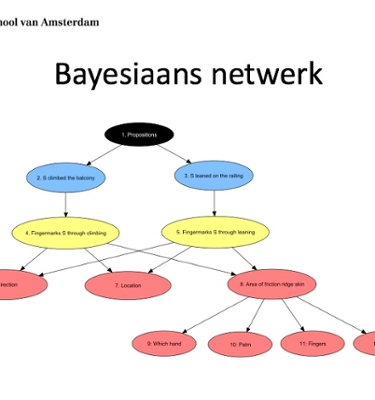The evaluation of fingermarks given activity level propositions
ArtikelFingermarks are highly relevant in criminal investigations for individualization purposes. In some cases, the question in court changes from ‘Who is the source of the fingermarks?’ to ‘How did the fingermark end up on the surface?’. In this paper, we explore evaluation of fingermarks given activity level propositions by using Bayesian networks. The variables that provide information on activity level questions for fingermarks are identified and their current state of knowledge with regards to fingermarks is discussed. We identified the variables transfer, persistency, recovery, background fingermarks, location of the fingermarks, direction of the fingermarks, the area of friction ridge skin that left the mark and pressure distortions as variables that may provide information on how a fingermark ended up on a surface. Using three case examples, we show how Bayesian networks can be used for the evaluation of fingermarks given activity level propositions.
Fingermarks play an important role in forensic science. Based on the assumption that every individual holds a unique pattern of friction ridge skin on their hands, this pattern can be used for identification. By determining the source of the fingermark, a link between the donor and a crime scene can be established. There is a wealth of research on the visualization of latent fingerprints in order to enhance the friction ridge pattern for individualization purposes. While this type of research is very valuable for the individualization of the source of a trace, the fingermark itself may not unequivocally be attributed to a criminal activity.
An important question that often comes up in court cases regarding forensic evidence is to determine how or when a trace was deposited. Consider the following case example; a woman calls the police to report that there has been a burglary in her apartment. The police find four fingermarks on the railing of the balcony, which leads to the assumption that the perpetrator entered the apartment via the balcony. Through a database search, a match is found with a suspect, who is an acquaintance of the woman. The suspect claims that, instead of an unauthorized intrusion via the balcony, he visited the woman a week earlier and smoked a cigarette on the balcony while leaning on the railing. In cases like this, the question at stake changes from ‘Who is the source of the fingermarks?’ to ‘What activity led to the deposition of the fingermarks?’, which requires a different assessment of the findings.

